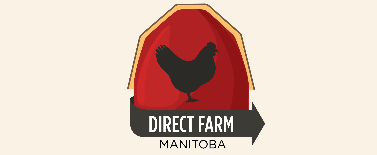Living without pesticides
 Thursday, July 4, 2013 at 8:50AM
Thursday, July 4, 2013 at 8:50AM By Selena Randall
On Friday, the Province announced their decision after consultation about a ban on cosmetic pesticide use. They followed the scientific evidence and a precautionary principle, concluding that the benefits of a weed-free lawn were not worth the risks of harm to the health of our children. The pesticide ban comes into effect in December 2014, with householders having a 12 month grace period to use up any remaining supplies. Manitoba is finally catching up with most other Provinces and much of the developed world.
I’m pleased about the decision – I study Lake Winnipeg, and I think this ban will ultimately help the health of the lake. And this decision will safeguard the health of generations to come.
But I am sure there are many gardeners out there, worrying about what they will do to protect their lawn from those problem weeds.
How big a problem are a few weeds anyway? I have white and red clover in my front lawn and the bees love the flowers. It grows slowly and low, feels nice to walk on, and it’s no problem to mow whenever I cut the grass. It’s also fixing nitrogen from the air which will help my grass grow better. I have a few herbs and broad leaved weeds too – these smell nice, and they don’t affect my mowing.
I have dandilions and thistles, and the long tap roots on these weeds help aerate the soil, and the dandelion leaves are great in salads. But for the sake of my neighbours I pull my thistles regularly (after rain), and mow my dandilions! I have also been reading about the use of corn gluten to deal with weeds in lawns. Applied in spring, corn gluten prevents seed germination, and provides fertilizer for the grass
Dealing with the problem weeds is not the whole answer though. Most pest problems in lawns are usually caused by problems in the growing conditions. This could be factors like the drainage or moisture, shade, or compaction. It’s a big task to deal with problems in the lawn, but ignoring them and just dealing with the effects of the problems doesn’t make it go away!
We could also think about the species of grass we grow. Most of us have Kentucky blue-grass, which grows nice and green, but is one of the least well adapted grasses for our hot, dry climate. Keeping it mowed short and watering it just makes the problem worse. These actions encourage short roots that rely on the regular application of water rather than growing deep to find their own. Overseeding each spring with a mix of native grasses (different fescue species) will in a few years replace your Kentucky blue-grass with a drought tolerant, thick weed suppressing mat of grass and a slower growing lawn that needs mowing less often.
Then there is always the option to replace grass with food! Why not create a few vegetable beds or grow fruit bushes. There’s something really special about eating a bowl of blackcurrants from the garden with your granola, or tossing a salad of leaves fresh from your own yard!



Reader Comments